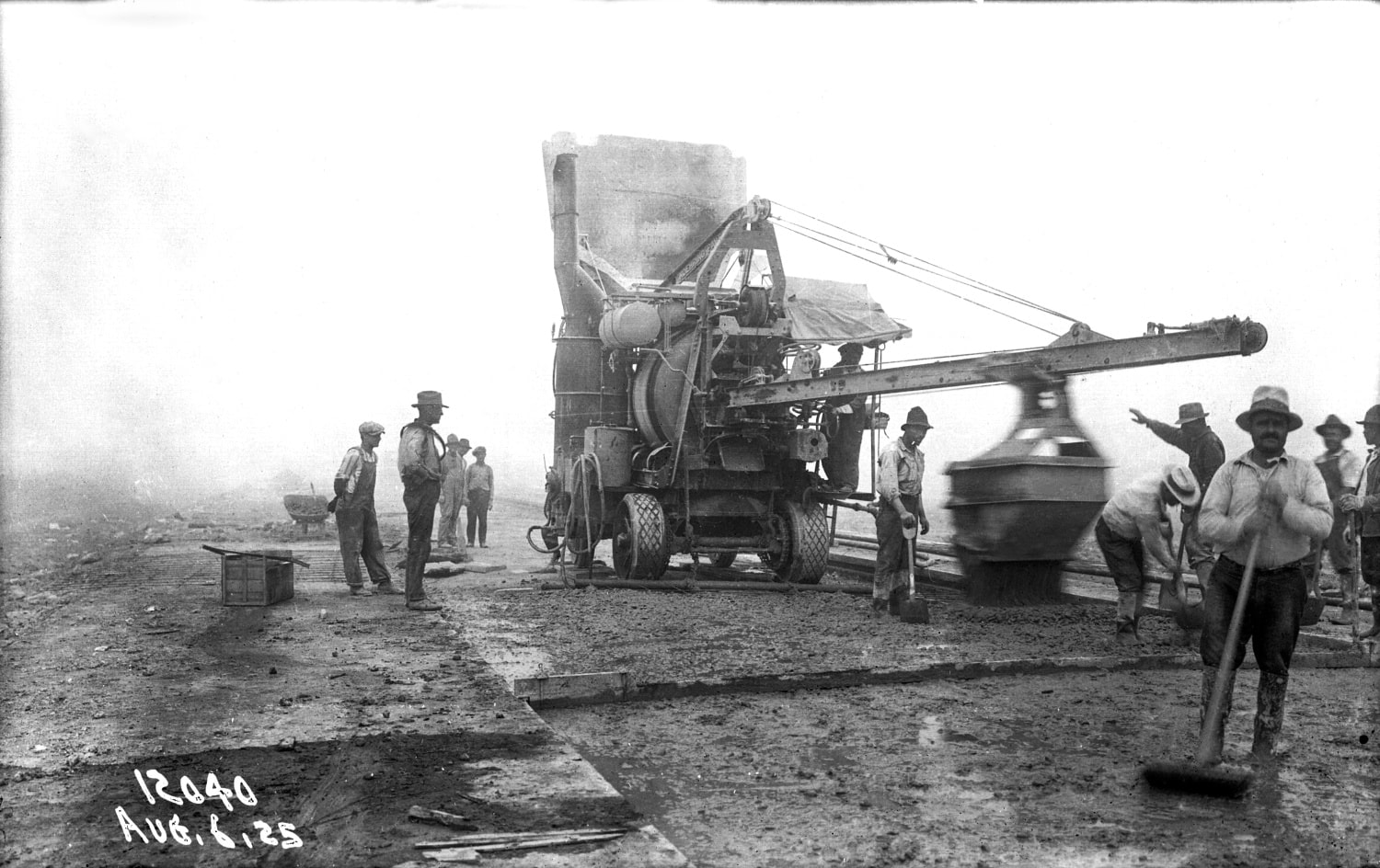The History of The First Concrete, structures were built by the Nabataea traders or Bedouins who occupied and controlled a series of oases and developed a small empire in the regions of southern Syria and northern Jordan in around 6500 BC.

There is no denying that concrete and the technology surrounding it has come a long way since its discovery and development. From the Great Pyramids at Giza to smart sensors for testing concrete temperature, maturity, etc., we’ve put together a list of notable events and discoveries in the history of concrete.
6500BC – UAE: The earliest recordings of concrete structures date back to 6500BC by the Nabataea traders in regions of Syria and Jordan. They created concrete floors, housing structures, and underground cisterns.
3000 BC – Egypt and China: Egyptians used mud mixed with straw to bind dried bricks. They also used gypsum mortars and mortars of lime in the pyramids. The Great Pyramids at Giza used about 500,000 tons of mortar. A form of cement was also used to build the Great Wall of China around this time.
600 BC – Rome: Although the Ancient Romans weren’t the first to create concrete, they were first to utilize this material widespread. By 200 BC, the Romans successfully implemented the use of concrete in the majority of their construction. They used a mixture of volcanic ash, lime, and seawater to form the mix. They then packed the mix into wooden forms, and once hardened, stacked the blocks like brick. After more than 2,000 years, Roman concrete structures stand tall due to their ingredients colliding with Earth’s natural chemistry.
Technological Milestones: during the Middle Ages, concrete technology crept backward. After the fall of the Roman Empire in 476 AD, the technique for making pozzolan cement was lost until the discovery of manuscripts describing it was found in 1414. This rekindled interest in building with concrete.
It wasn’t until 1793 that the technology took a big leap forward when John Smeaton discovered a more modern method for producing hydraulic lime for cement. He used limestone containing clay that was fired until it turned into clinker, which was then ground into powder. He used this material in the historic rebuilding of the Eddystone Lighthouse in Cornwall, England.
In 1824 Joseph Aspdin invented Portland cement by burning finely ground chalk and clay until the carbon dioxide was removed. Aspdin named the cement after the high-quality building stones quarried in Portland, England.
In the 19th Century concrete was used mainly for industrial buildings. The first widespread use of Portland cement in home construction was in England and France between 1850 and 1880 by Francois Coignet, who added steel rods to prevent exterior walls from spreading.






